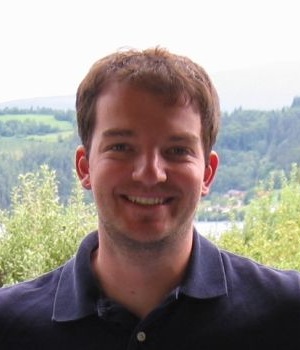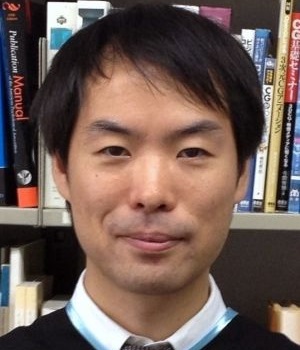
| Abstract Submission | May 8, 2015 - 23:59 PDT (GMT-7) |
| Full/Short Paper Submission | May 15, 2015 - 23:59 PDT (GMT-7) |
| Author Notification | July 4, 2015 - 23:59 PDT (GMT-7) |
| Camera Ready | August 3, 2015 - 23:59 PDT (GMT-7) |
| Conference | October 7 - 9, 2015 |

| Abstract Submission | May 8, 2015 - 23:59 PDT (GMT-7) |
| Full/Short Paper Submission | May 15, 2015 - 23:59 PDT (GMT-7) |
| Author Notification | July 4, 2015 - 23:59 PDT (GMT-7) |
| Camera Ready | August 3, 2015 - 23:59 PDT (GMT-7) |
| Conference | October 7 - 9, 2015 |
The full program can be found here.

| Speaker | Peter Wonka |
|
Professor of Computer Science at King Abdullah University of Science and Technology (KAUST) and Arizona State University |
|
| Title | Computational Design of Urban Layouts |
| Abstract |
A fundamental challenge in computational design is to compute layouts by arranging a set of shapes. In this talk I will present recent urban modeling projects with applications in computer graphics, urban planning, and architecture. The talk will look at different scales of urban modeling (streets, floorplans, parcels). A common challenge in all these modeling problems are functional and aesthetic constraints that should be respected. The talk also highlights interesting links to geometry processing problems, such as field design and quad meshing. |

| Speaker | Nobuyuki Umetani |
|
Research Scientist at Autodesk Research |
|
| Title | Simulation-guided Interactive Exploration of Functional Design |
| Abstract |
Physical simulation allows validation of geometric designs without tedious physical prototyping. However, since geometric modeling and physical simulation are typically separated, simulations are mainly used for rejecting bad design, and not for assisting creative exploration towards better designs. In this talk, I introduce several interactive approaches to integrate physical simulation into geometric modeling to actively support creative design process. Importance of interactivity in the design system will be discussed in various practical contexts including structurally robust design, musical instrument design, garment design, and aerodynamics design. |
| Speaker | Kun Zhou |
|
Cheung Kong Professor and Director of the State Key Lab of CAD&CG at Zhejiang University |
|
| Title | Digital Avatars for All: Interactive Face and Hairs |
| Abstract |
Although realistic face/hair modeling and animation technologies have been widely employed in computer generated movies, it remains challenging to deploy them in consumer-level applications such as computer games, social networks and other interactive applications. The main difficulties come from the requirement of special equipment, sensitivity to daily environments, laborious manual work and high computational costs. In this talk, I will introduce our recent work on realistic face/hair modeling and animation, targeting at interactive applications and ordinary users. In particular, I will describe fully automatic approaches to real-time facial tracking and animation with a single web camera, methods for modeling hairs from images, and real-time algorithms for realistic hair simulation. |
Dispersion-based Color Projection using Masked Prisms
Rafael Hostettler, Ralf Habel, Markus Gross, Wojciech Jarosz
Interactive Rigging with Intuitive Tools
Seungbae Bang, Byungkuk Choi, Roger Blanco i Ribera, Meekyoung Kim, Sung-Hee Lee, Junyong Noh
Tone- and Feature-Aware Circular Scribble Art
Chun-Chia Chiu, Yi-Hsiang Lo, Ruen-Rone Lee, Hung-Kuo Chu
Superpixels Generation of RGB-D Images Based on Geodesic Distance
Xiao Pan, Yuanfeng Zhou, Shuwei Liu, Caiming Zhang
| Daniel Cohen-Or | Tel Aviv University |
| Ming C. Lin | University of North Carolina |
| Shi-Min Hu | Tsinghua University |
| Jos Stam | Autodesk |
| Niloy J. Mitra | University College London |
| Kun Xu | Tsinghua University |
| Song-Hai Zhang | Tsinghua University |
| Yong-Jin Liu | Tsinghua University |
| Alec Jacobson | Columbia University | Baoquan Chen | Shandong University |
| Belen Masia | University of Zaragoza | Bernd Bickel | IST Austria |
| Bin Wang | Tsinghua University | Bing-Yu (Robin) Chen | National Taiwan University |
| Carol O'Sullivan | Trinity College Dublin & Disney Research LA | Carsten Dachsbacher | Karlsruhe Institute of Technology |
| Changhe Tu | Shandong University | Chenfeng Li | Swansea University |
| Chongyang Ma | University of Southern California | Chris Wyman | NVIDIA Research |
| Christopher Batty | University of Waterloo | Claudio Silva | New York University |
| Cyril Soler | Inria | Daniele Panozzo | ETH Zurich |
| David Levin | Disney Research Boston | Diego Gutierrez | University of Zaragoza |
| Dong-ming Yan | KAUST | Duygu Ceylan | EPFL |
| Emily Whiting | Dartmouth College | Enhua Wu | Chinese Academy of Sciences & University of Macau |
| Eugene Zhang | Oregon State University | Fabio Pellacini | Sapienza University of Rome |
| Falai Chen | University of Science and Technology of China | Feng Liu | Portland State University |
| Guoning Chen | University of Houston | Guoping Wang | Peking University |
| Hans-Peter Seidel | MPI Informatik | Hao Li | University of Southern California |
| Hiromasa Suzuki | The University of Tokyo | Holly Rushmeier | Yale University |
| Hong Qin | Stony Brook University | Hongzhi Wu | Zhejiang University |
| Huamin Wang | Ohio State University | Hui Huang | SIAT |
| Hujun Bao | Zhejiang University | Jack M. Wang | the University of Hong Kong |
| James Tompkin | Harvard University | Jernej Barbic | University of Southern California |
| Jianmin Zheng | Nanyang Technological University | Jingyi Yu | University of Delaware |
| Johannes Kopf | Microsoft Research | Jue Wang | Adobe |
| Kai (Kevin) Xu | National University of Defense Technology | Kalyan Sunkavalli | Adobe |
| Ken Museth | DreamWorks Animation | Kun Zhou | Zhejiang University |
| Lei Zhang | Beijing Institute of Technology | Leif Kobbelt | RWTH Aachen University |
| Ligang Liu | University of Science and Technology of China | Lili Wang | Beihang University |
| Lizhuang Ma | Shanghai Jiaotong University | Lvdi Wang | Microsoft Research Asia |
| Manuel M. Oliveira | UFRGS | Matthias Teschner | University of Freiburg |
| Matthias Zwicker | University of Bern | Michael Brown | National University of Singapore |
| Miguel Otaduy | URJC Madrid | Min H.Kim | KAIST |
| Ming-Ming Cheng | Nankai University | Myung-Soo Kim | Seoul National University |
| Nico Pietroni | CNR-ISTI | Nicolas Bonneel | CNRS |
| Nils Thuerey | TU Munich | Nobuyuki Umetani | Disney Research Zurich |
| Oliver van Kaick | Tel Aviv University | Pieter Peers | College of William & Mary |
| Pradeep Sen | UCSB | Qiming Hou | Zhejiang University |
| Qixing (Peter) Huang | Stanford University | Rahul Narain | University of Minnesota |
| Rui Wang | University of Massachusetts | Ruigang Yang | University of Kentucky |
| Ruo-Feng Tong | Zhejiang University | Ryan Schmidt | Autodesk Research |
| Sai-Kit Yeung | Singapore University of Technology and Design | Seungyong Lee | Pohang University of Science and Technology |
| Stefan Bruckner | University of Bergen | Stefan Jeschke | IST Austria |
| Stephen J. Guy | University of Minnesota | Steve Lin | Microsoft Research Asia |
| Sung-Eui Yoon | KAIST | Taehyun Rhee | Victoria University of Wellington |
| Taku Komura | Edinburgh University | Tao Chen | Columbia University |
| Tao Ju | Washington University in St. Louis | Thabo Beeler | Disney Research Zurich |
| Theodore Kim | UCSB | Tianqiang Liu | Princeton University |
| Tien-Tsin Wong | The Chinese University of Hong Kong | Tim Chen | Hasso Plattner Institute |
| Toshiya Hachisuka | The University of Tokyo | Vladimir G. Kim | Stanford University |
| Weiming Dong | Institute of Automation, Chinese Academy of Sciences | Weiwei Xu | Hangzhou Normal University |
| Wen-Chieh (Steve) Lin | National Chiao Tung University | Wenping Wang | The University of Hong Kong |
| Xianfeng(David) Gu | Stony Brook University | Xiaowu Chen | Beihang University |
| Xin Sun | Microsoft Research Asia | Xin Tong | Microsoft Research Asia |
| Xueying Qin | Shandong University | Yang Liu | Microsoft Research Asia |
| Yangyan Li | Stanford University | Yongliang Yang | University of Bath |
| Yoshinori Dobashi | Hokkaido University | Young J. Kim | Ewha Womans University |
| Yue Dong | Microsoft Research Asia | Yu-Kun Lai | Cardiff University |
| Yung-Yu Chuang | National Taiwan University | Yu-Shuen Wang | National Chiao Tung University |
| Zhao Dong | Autodesk | Zhigang Deng | University of Houston |
| Zhong Ren | Zhejiang University |
| Full Registration: | 500 USD / 3200 CNY |
| Student Registration: | 300 USD / 1900 CNY |
Both full and student registration covers all technical sessions, dining (3 lunches and 3 dinners) and coffee breaks during the three days of PG 2015;
The registration fee can be paid either by cash or credit card at the conference venue.
To register, please download and fill out the Registration Form (English or Chinese), and email it to pg2015.register@gmail.com before Sep 22, 2015.
If you need a visa to visit China, please fill in the fields of "OFFICIAL INVITATION LETTER FOR VISA" in the registration form, and also send a scanned copy of the first page of your passport to pg2015.pg2015.register@gmail.com. We will then send you the official invitation letter for visa application.
For accommodation, special prices have been negotiated for conference attendees at two hotels: Unisplendour International Communication Center(2 min. walk to conference venue) and QinghuaYuan Hotel(5 min. walk to conference venue). To make a reservation in either of the two hotels, you need to fill in the necessary fields in the registration form, and send it to pg2015.register@gmail.com.
We also suggest several alternative hotels:
1. Wenjin Hotel (http://www.booking.com/hotel/cn/wen-jin-beijing.html): 15 minutes walk to conference venue, approx. 1000 CNY/night;
2. Holiday Inn Beijing Haidian (http://www.booking.com/hotel/cn/holiday-inn-beijing-haidian.html): 15 minutes walk to conference venue, approx. 500 CNY/night;
3. Hejia Inn (http://www.booking.com/hotel/cn/hejia-hotel-beisihuan.html): 10 minutes walk to conference venue, approx. 350 CNY/night;
Pacific Graphics 2015 will take place at the Lecture Hall of the Future Internet Technology(FIT) building. The FIT building is located at the South-East Gate of Tsinghua University.

The detailed position of the FIT building can be found in Google Map or Tencent Map.
We also provide a detailed route instruction here.
The best connection from either the airport or the railway station to the conference venue is taking a taxi.
If you arrive at Beijing International Airport:
A taxi ride to the South-East Gate of Tsinghua University takes ~45 minutes and ~100 CNY (13 US Dollar).
If you take the railway to Beijing and arrive at:
1. Beijing Railway Station, the taxi ride to the South-East Gate of Tsinghua University requires ~45 minutes and ~60 CNY (8 US Dollar).
2. Beijing West Railway Station, the taxi ride to the South-East Gate of Tsinghua University requirest ~30 minutes and ~40 CNY (5 US Dollar).
From the South-East Gate of Tsinghua University to the FIT Lecture Hall:
Setp 1. Walk through the South-East Gate of Tsinghua University. The FIT building is the first building on your left.
Setp 2. Get inside the FIT building and go to the second floor. The Lecture Hall is located on the west side of the second floor.
You can print either of the following cards and show it to the taxi driver, which contains the Chinese address of:
1. The South-East Gate of Tsinghua University
2. Unisplendour International Communication Center
3. Qinghuayuan Hotel
Copyright © Pacific Graphics - All Rights Reserved Contact Us: pg2015.conf (at) gmail.com